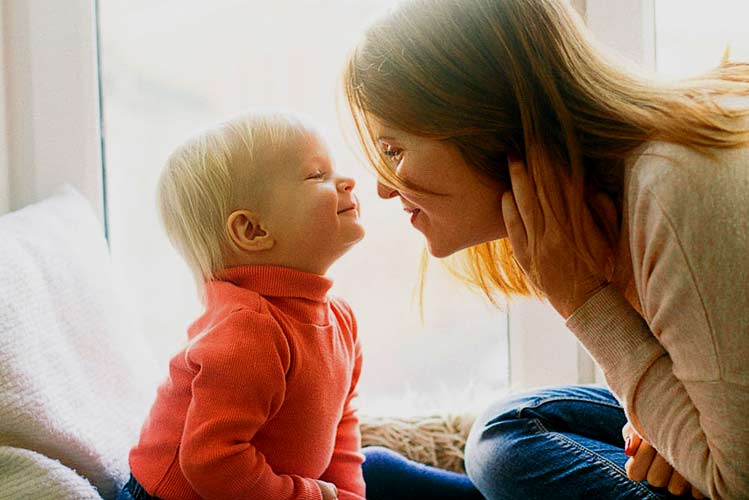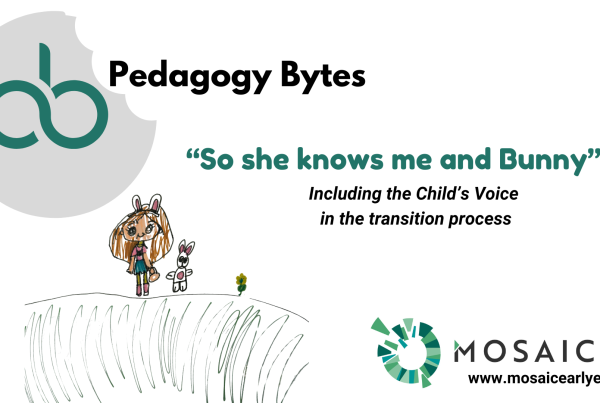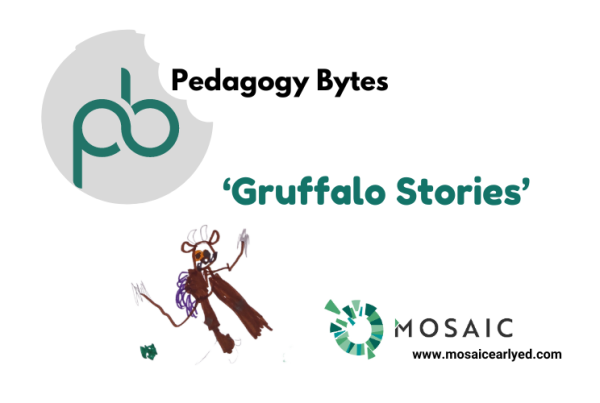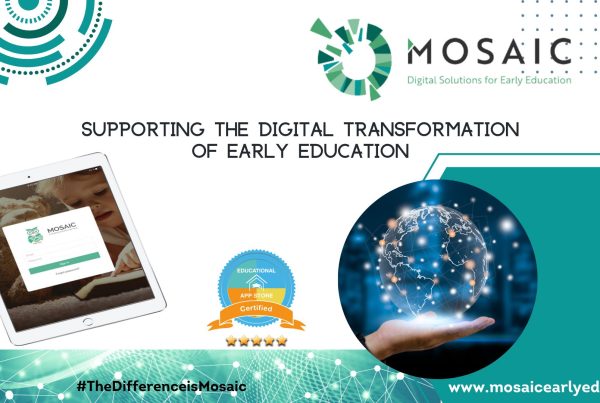Children thrive from a base of consistent, loving and secure relationships. This is normally provided by a child’s parents but it can also be provided by a Key Educator/Person when the child attends an early childhood service. A Key Person is a named member of staff with responsibilities for a small group of children who helps those children in the group feel safe and cared for meeting emotional needs and supporting the child’s well-being.
The Key Person Approach is characterised by a relationship of trust so that the child can feel secure within a group experience. The Key Person supports physical needs too, helping with issues like nappy changing, toileting and dressing. That person is a familiar figure who is accessible and available as a point of contact for parents and one who builds relationships with the child and parents or carers.
What does the Aistear Síolta Practice Guide say about the Key Person Approach?
‘Key Person s, in addition to their usual everyday interactions with parents and families, get to know a small group of ‘key’ children very well. They act as a link between the setting and home – assessing, documenting and planning for these children’s learning and development and sharing this information with parents and other relevant people, for example, a speech therapist or social worker’.
What does the Key Educator do?
In the early childhood setting, each large group of children within a room can be divided up between Educators, with each adult being responsible for one small group of children. The role of a Key Educator includes:
- being a familiar point of contact for parents and families when the child starts in the setting and at daily arrival and departure times.
- getting to know each child’s interests, preferences, temperament, ways of communicating (verbal and non-verbal), emotional and physical needs, and responding to these sensitively.
- being aware of the child’s language, background and culture, and ensuring that these are understood, respected and reflected in the setting.
- being a secure base for the child from which he/she can explore and interact with others.
- observing, assessing and recording the child’s learning and development, and helping to plan new experiences that build on interests and help him/her to learn and develop in a holistic way.
- sharing important information with parents, for example, when the baby, toddler or young child does or says something new or when he/she particularly enjoys something or makes a new friend.
- easing transitions for the child by helping to introduce new experiences and people, and helping the child to cope with change, for example, at the settling-in stage, when moving through activities during the day or spending time in a new room with the child to ease the transition to a new group or staff member.
The Key Person Approach has many benefits for all of those involved – the child, the family and the Educator.
The child … Having a Key Person in an early childhood setting gives the child a secure base, enabling them to develop emotionally and socially. From this secure base the child can explore the environment, make friends and learn new things. One adult who provides a stable, secure environment who the child knows is their point of contact when required will impact positively on the child’s self-belief, self-reliance and overall wellbeing.
The parent … An environment where staff come and go, either because of shifts or because of high staff turnover, can be a source of concern to the parent. It is important, therefore, that parents have one person that they and their child can connect to as this will give them greater confidence about the quality and commitment of the service.
The Educator … Working with children in this way allows the Educator to better ‘tune into’ children’s play and their conversations to really get to know the children in the group well. This is essential in delivering a curriculum programme that emerges with the child’s interests and stage of development. Children feel settled and happy and are more confident to explore and as a result become more capable learners.
Secure Attachments are Central to Well-being
Attachments are the emotional bonds that young children develop with parents and other carers such as their Key Person. Children with strong early attachments cry less when separated. They engage in more pretend play and sustain attention for longer. They are less aggressive and are popular with other children and with adults. Their sense of who they are is strong. Children need to be safe in the relationship they have with parents or carers. They are vulnerable but will develop resilience when their physical and psychological well-being is protected by an adult. Being emotionally attached to such an adult helps the child feel secure that the person they depend on is there for them. When children feel safe they are more inclined to try things out and be more independent. They are confident to express their ideas and feelings and feel good about themselves. Attachment influences a child’s immediate all-round development and future relationships.
The principles of the Key Person Approach can be linked to the Síolta Standards on Rights of the Child, Interactions, Play, Curriculum, Health and Welfare, Transitions, and Identity and Belonging, and all four of the Aistear learning themes.
For more information on the Key Person Approach see:
- Aistear Síolta Practice Guide Tip Sheet: Using a Key Person Approach http://aistearsiolta.ie/en/Transitions/Using-a-Key-Person-approach.pdf
- The Key Person Approach: Barnardos https://mosaicearlyed.com/wp-content/uploads/2019/03/Barnardos_KeyPersonBooklet_final-draft.pdf




